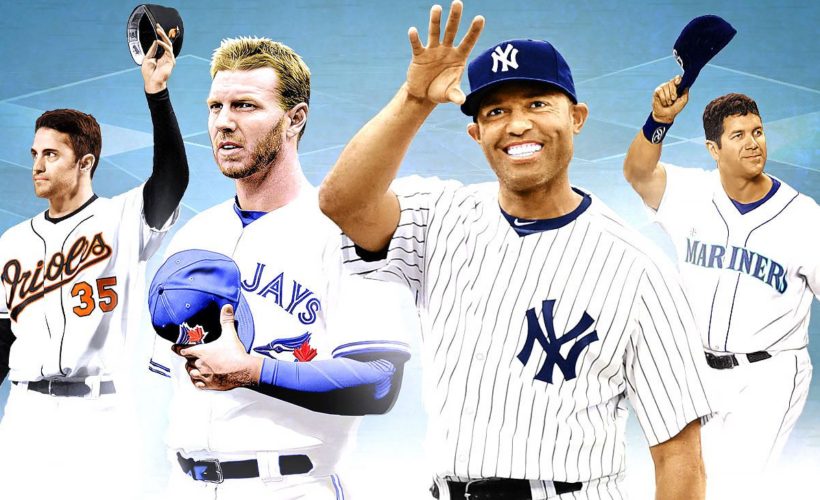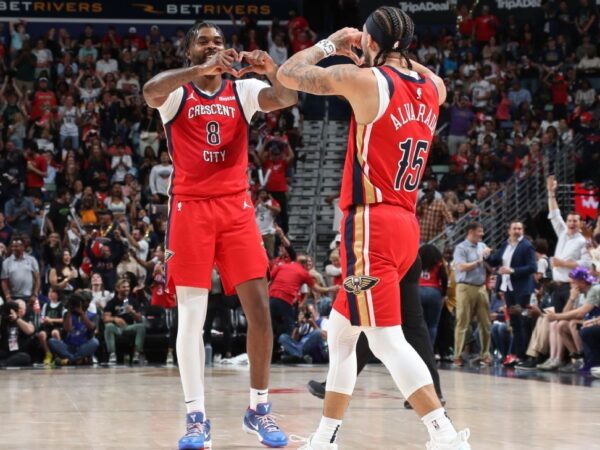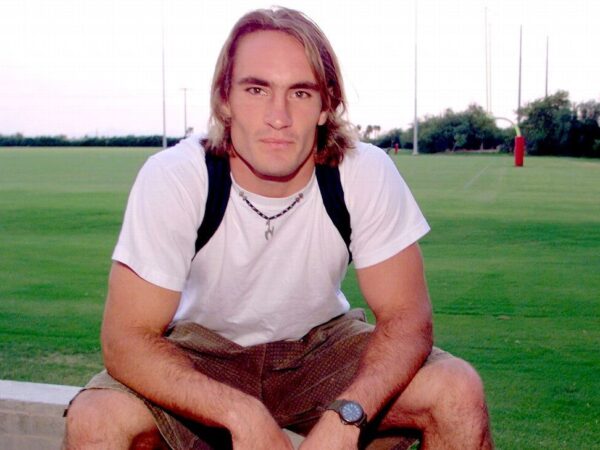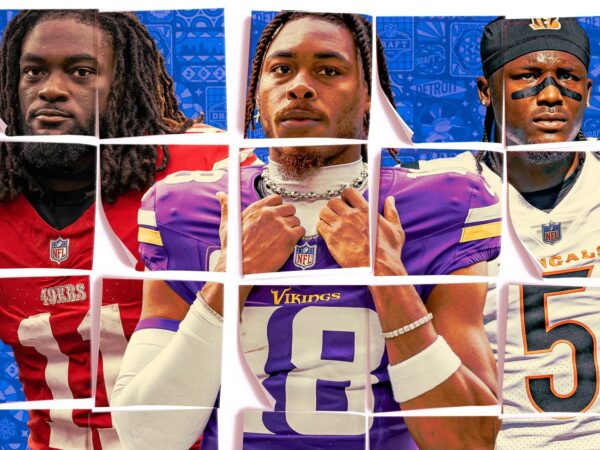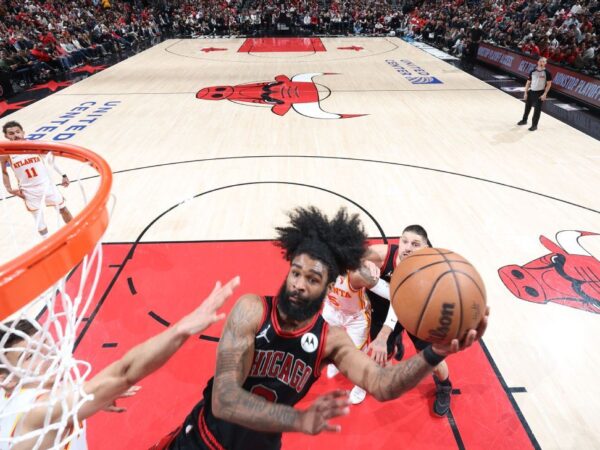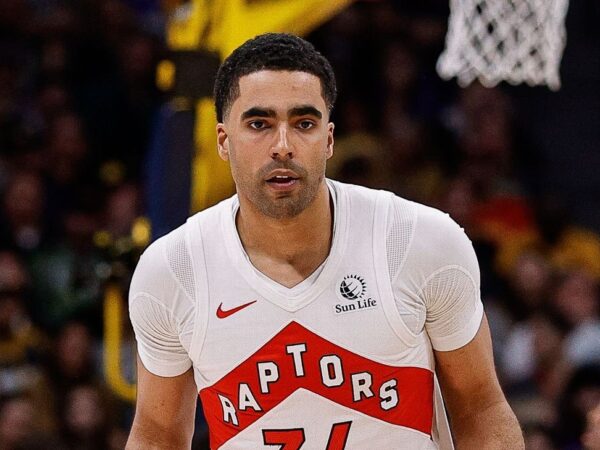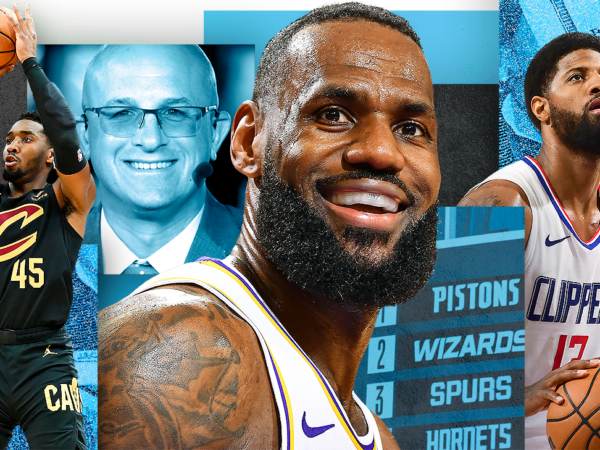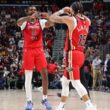The past two years of Hall of Fame votes demonstrated that the mindset of the electorate has shifted to a bigger, more inclusive Hall that will reward recent players with the same generosity previous generations created in building a plaque gallery overstuffed with players from the 1920s and 1930s.
Actually, that isn’t a fair comparison. With the election of six players last year and six more who will be inducted in Cooperstown on Sunday, the bar for election remains well above the standards that the Veterans Committee established in the late ’60s and early ’70s. That was when Frankie Frisch managed to elect many dubious candidates from his era, many of them former teammates of his on the Giants and Cardinals.
This year’s group of six includes four extremely well-qualified players, including two who made it on their first ballot. Two of our six are icons for their franchises, and another was so beloved that his uniform number was retired while he was still an active player for another team. There are no catchers from the 1800s or commissioners who turned a blind eye to steroids. These are six players, all of whom began their careers in 1980 or later. Here’s why each of these can be called a Hall of Famer.
Mariano Rivera
The first player selected as a unanimous choice to the Hall of Fame needs no introduction. He’s the greatest closer of all time, and it’s not even a debate — and that’s before considering that he might be the most valuable postseason pitcher of all time, as he went 8-1 with a 0.70 ERA and 42 saves in 96 appearances and 141 innings in the playoffs, helping the Yankees win five World Series.
His story is a remarkable testament to the unpredictable path of a baseball career. He had Tommy John surgery in the minors. The Yankees left him unprotected in the 1993 expansion draft and once nearly traded him for Felix Fermin. He became a reliever only after struggling in his initial stint in the majors as a starter. He learned the cutter early in his major league career and built his Hall of Fame résumé with that singular pitch that left a trail of broken bats and weak infield pop flies.
In his 18 seasons as a reliever, Rivera had an ERA over 3.00 just once — an unsightly 3.15 mark in 2007. He remained forever humble and admired throughout the game. Who could dislike Mariano Rivera? He finished with 652 saves — 51 more than Trevor Hoffman, the No. 2 guy on the list. After that, nobody else has 500. Closers come and go and burn out quickly. Rivera was so good that even in his final season, at age 43, he had 44 saves and a 2.11 ERA. He could probably still close for many teams today.
One Mariano Rivera stat to know: His adjusted ERA+ of 205 ranks first all time — 105% better than league average. No. 2 on the list is Clayton Kershaw at 158, and No. 3 is Pedro Martinez at 154. OK, Rivera was a reliever and didn’t pitch as many innings as the starters below him on the list. Another advanced metric called Win Probability Added considers the specific game situation of a pitcher’s results, and Rivera ranks fifth, behind only Roger Clemens, Lefty Grove, Greg Maddux and Warren Spahn.
• A-Rod on Rivera: Mo wasn’t afraid to chew out ‘somebody who needed it. Like me’
Roy Halladay
1:03
With 2 Cy Young Awards, a perfect game and a postseason no-hitter under his belt, Roy Halladay earned his election to the Baseball Hall of Fame.
The late Halladay, who died in a plane he was piloting in November 2017, was a long-limbed tactician who threw a variety of sinking fastballs, splitters, cutters and curveballs with precise location and magical movement. He won just 203 games, low for a Hall of Fame starter, but his extraordinary peak value — in the 10 seasons from 2002 to 2011 with the Blue Jays and Phillies, he went 170-75 with a 2.97 ERA, two Cy Young Awards and two runner-up finishes — made him a first-ballot selection.
Does he make it with 85% of the vote if not for his untimely death? Maybe not on the first ballot, but his 65.4 career WAR — his career ended rather abruptly due to shoulder problems in 2012 and 2013 — is still solid for a Hall of Fame starter. Halladay threw hard enough, but it was his pinpoint command that made him so good. In that 10-year run of domination, he averaged just 1.5 walks per nine innings. He led his league five times in strikeout-to-walk ratio and was one of the last of a dying breed: the starter who could complete a game. He led his league seven times in complete games and four times in innings pitched. He was the pitcher other pitchers wanted to be.
Halladay had two shining moments: his perfect game for the Phillies on May 29, 2010, and his no-hitter in the Division Series against the Reds later that season in his first career playoff start, in which he gave up just one walk while throwing 104 pitches. Phillies catcher Carlos Ruiz summed up Halladay’s stuff that night like this: “Oh, my god.”
Those who played alongside him will remember him for his legendary workouts. “Roy Halladay is the ultimate competitor,” teammate Chase Utley said when Halladay retired in 2013. “He is by far the hardest worker that I’ve ever seen and treated every game as if it were his last. It was no coincidence why he was the best pitcher of his era.”
One Roy Halladay stat to know: He threw nine complete games each season from 2008 to 2010 and eight in 2011. Last season, no team threw more than five. Halladay won his second Cy Young Award in this decade, yet his era almost feels like another time.
Mike Mussina
0:32
Mike Mussina located his fastball and used his knuckle-curve to fool batters and win 270 games over the span of his 18-year career.
He won 270 games. He has more career WAR than Bob Gibson and Tom Glavine and Carl Hubbell and Jim Palmer and Juan Marichal. He was excellent in the postseason, with a 3.42 ERA over 139.2 innings. Yet when Mussina first hit the Hall of Fame ballot in 2014, he received just 20% of the vote. It took some time, but voters finally came around and rewarded Mussina’s long run of consistent performance on his sixth try.
The argument against Mussina was always “he was never the best.” Well, most Hall of Famers were never the best. Mussina never won a Cy Young Award, but he was very good for 18 seasons with the Orioles and Yankees and could have kept pitching if he had wanted to win 300 games — he won 20 in his final season. He ranked in the top 10 in his league in pitching WAR in 11 seasons and in the top five in seven (including first in 2001).
Like Halladay, Mussina was a pitcher’s pitcher. He wasn’t overpowering, but his knuckle-curve became his most famous weapon, and he located his fastball, slider and curveball with expert command. He was extremely durable, won seven Gold Gloves and received Cy Young votes in nine seasons.
One Mike Mussina stat to know: He ranks 23rd in WAR among pitchers — all time. He is 13th among pitchers since World War II. He should have been an easy Hall of Fame choice.
• A-Rod on Mussina: ‘He was like a poker player who could always read me and my hand’
Edgar Martinez
1:15
Mike Petriello explains how Harold Baines’ election to the Hall of Fame reveals flaws in the voting process, while Eduardo Perez says it’s time to celebrate his election.
He hit .312 and won two batting titles. He had a .418 career on-base percentage, leading his league three times and topping .400 11 times, including nine seasons in a row. He slugged .515. He couldn’t run, but because he was on base so often, he scored 100 runs five times. Few hitters were as respected by their peers. Why did it take this man 10 tries to get elected?
Sure, he spent most of his career as a designed hitter. But from 1995 to 2001, he averaged .329/.446/.574 with 28 home runs, 42 doubles and 110 RBIs with a 164 OPS+. Vladimir Guerrero never had one season with a 164 OPS+. Freddie Freeman has never had a 164. Neither has Jose Altuve or Robinson Cano or Nolan Arenado. David Ortiz, the other greatest DH ever, beat 164 just twice. Let’s just say Edgar could hit a little bit.
Martinez played all of his 18 seasons with the Mariners and became the most beloved player in franchise history — after they nearly ruined it by not giving him a regular chance in the majors until he was 27. Then again, maybe he was lucky they didn’t release him after he hit .173 in the Northwest League in 1983. He had to overcome an eye condition called strabismus, which prevents eyes from aligning simultaneously, and he spent nearly two decades doing daily eye exercises. After winning his first batting title in 1992, he tore up his knee the following spring. The best was yet to come. His entire career was a miracle.
One Edgar Martinez stat to know: He’s one of 21 players since 1900 with a career .300/.400/.500 batting line. Only seven others started their careers after World War II: Manny Ramirez, Frank Thomas, Chipper Jones, Larry Walker, Todd Helton, Joey Votto and Mike Trout.
• A-Rod on Martinez: ‘He would have a Ph.D. in hitting’
Lee Smith
The gregarious, outgoing Smith was a man of two eras: When he came up in 1980, the closer — or stopper — was expected to pitch with runners on base and pitch more than one inning at times. From 1982 to 1984, Smith averaged 107 innings per season — nearly double what a closer might pitch today. In 1983, when he led the National League with 29 saves with the Cubs, he pitched at least two innings in 24 of his 66 appearances (and at least three innings seven times). Aroldis Chapman has pitched two innings 15 times in more than 500 career games — and never three innings. By the end of his career, Smith was averaging less than an inning per game. In 1993, he pitched in 63 games and 58 innings — and had 46 saves.
He retired in 1997 as the all-time saves leader with 478. He led his league four times. His career was difficult to judge, however. He had just one season with an ERA under 2.00 and just five under 3.00. He never had the peak level of dominance of contemporaries such as Dennis Eckersley, Dan Quisenberry and Bruce Sutter. He appeared in just four postseason games (and lost two of them). Hoffman and then Rivera soared past his saves total. But Smith lasted forever.
He first appeared on the BBWAA ballot in 2003 and received 42% of the vote. That’s usually a sure path to election. But he never got there, peaking at 50% in 2012. On his 15th and final try, he remained stuck at 34%. He moved on to the Today’s Game special committee vote. The panel of 16 put him in with unanimous support. How do you feel about it? That probably depends on how you feel about closers. Smith will have that No. 3 spot for a long time. The active leader in saves is Craig Kimbrel, and he’s still 140 behind Smith.
One Lee Smith stat to know: Here’s another example of how the closer role has changed: In his career, Smith inherited 510 runners. Even Rivera had just 367 inherited runners. Kimbrel has inherited just 77 runners in his career (and had two seasons with four and one with three). The job used to be a lot more difficult.
Harold Baines
1:23
2019 MLB Hall of Famer Edgar Martinez says the designated hitter position has deservedly earned its stripes since his playing days.
And you thought Jack Morris was a controversial selection? While Smith gained a fair amount of support from the writers, Baines peaked at just 6%. His election by the Today’s Game committee came as a shock.
He was, of course, a very good hitter, with a .289/.356/.465 career line, 384 home runs, 2,866 hits and 1,628 RBIs. He ranks 34th on the all-time RBIs list, and you have to suspect that was a key stat that helped him get elected. He hit .324 in 31 postseason games. Tony La Russa, his manager with both the White Sox and A’s, happened to be on the committee, and one of his main arguments was that Baines was a good hitter at 22 years old and still a good hitter at 40, when he hit .312 with 25 home runs and 103 RBIs and made the All-Star team. Few players have that kind of longevity, and longevity has usually been valued more in Hall of Fame voting than peak dominance.
Baines was never a big star. He finished ninth in one MVP vote and 10th in another, and bad knees forced him to DH duties fairly early in his career. His 38.7 career WAR pales in comparison to that of most modern Hall of Famers. How did he get in? It helps to have friends in high places: His White Sox owner, Jerry Reinsdorf, was on the committee along with La Russa. Baines was a respected teammate, a quiet man who went about his business. He’s in, and it’s weird, and it’s OK. Plus, he was so loved in Chicago that the White Sox retired his No. 3 when they traded him to the Rangers in 1989.
One Harold Baines stat to know: Baines ranked ninth in RBIs and sixth in hits in the 1980s. Showing up is half the battle.
Source:ESPN

